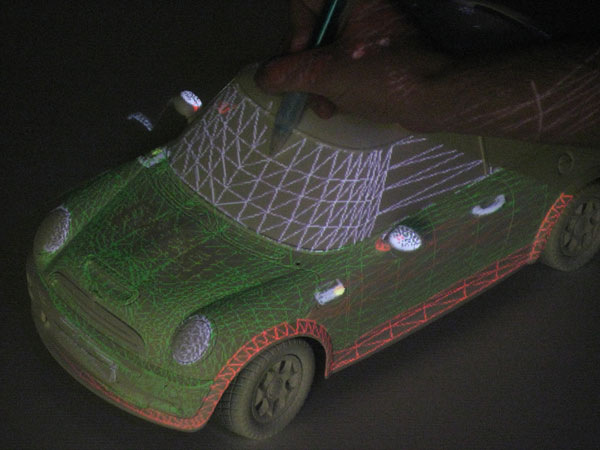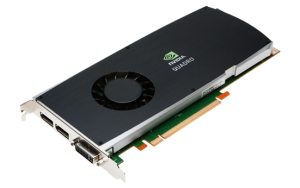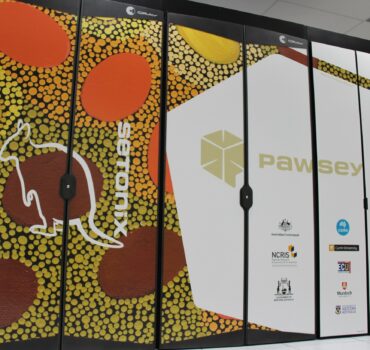UniSA Uses High Performance NVIDIA Graphic Accelerators to Drive Augmented Reality Lab
01 Dec 2013
Melbourne, Dec 03, 2013 – Developing and manufacturing complex new items like cars or submarines involves expensive prototypes and mock-ups which are difficult to design and assess before building – and expensive to modify.
Developing and manufacturing complex new items like cars or submarines involves expensive prototypes and mock-ups which are difficult to design and assess before building – and expensive to modify.
In a lab at the South Australian University’s Mawson Institute a sophisticated Spacial Augmented Reality (SAR) facility has been built to produce convincing visual simulations of almost any 3D object.
These simulations are produced using sophisticated computing technology running up to 40 overlapping video projections simultaneously.
This allows, for example, the designer/developer of an automobile dashboard and fascia to experience the design in “real” size and shape without having to construct a physical mock-up or prototype.

The lab, under the leadership of Prof. Bruce Thomas, works in collaboration with other SA Uni. departments involved in Wearable Computing, Human Computer Interfaces, and 3D Computer Graphics.
South Australian University uses highperformance NVIDIA Quadro video cards to drive augmented reality lab. The ability to project accurate visual representations in 3D space for interactive study and assessment provides extensive opportunities to resolve complex development issues. These techniques require very fast computing solutions which the university needs to obtain within realistic cost parameters.
 This computing solution was devised by XENON Systems, with ten Nitro Quad GPU servers, each using four high performace NVIDIA Quadro FX3800 graphics cards. As Dragan Dimitrovici – CEO of XENON Systems explained, “The NVIDIA Quadro solutions are innovative technology now being used across a wide range of computational visualization sectors including animation, design, film and TV post-production, and complex 3D design work. Based on NVIDIA Fermi architecture, the Quadro cards have been proven to increase 3D performance up to five times and speed up computational simulation up to eight times. They comfortably provide the high performance necessary to run the 40 projector 3D simulations in the SAUni lab at the Mawson Institute”.
This computing solution was devised by XENON Systems, with ten Nitro Quad GPU servers, each using four high performace NVIDIA Quadro FX3800 graphics cards. As Dragan Dimitrovici – CEO of XENON Systems explained, “The NVIDIA Quadro solutions are innovative technology now being used across a wide range of computational visualization sectors including animation, design, film and TV post-production, and complex 3D design work. Based on NVIDIA Fermi architecture, the Quadro cards have been proven to increase 3D performance up to five times and speed up computational simulation up to eight times. They comfortably provide the high performance necessary to run the 40 projector 3D simulations in the SAUni lab at the Mawson Institute”.



